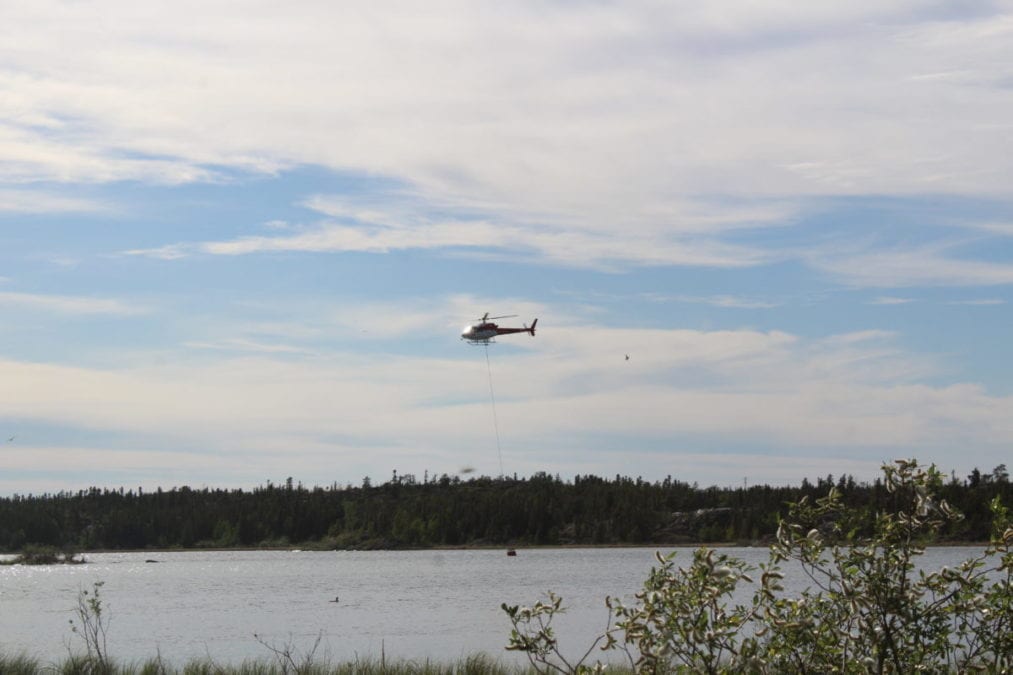Covid-19 is changing the way the GNWT is dealing with the wildfire season.
With additional funding to support operations across the NWT, the Department of Environment and Natural Resources (ENR) has implemented new measures to mitigate Covid-19 risks, Richard Olsen, manager of fire operations, told reporters during a teleconference Tuesday.
Every season, the possibility of large fires means additional crews from outside the NWT could be called into the territory to assist in wildfire operations. But with travel restrictions in place this year, ENR has had to restructure its contingency plans if additional firefighters are needed.
SA����Ӱ�Ӵ�ý�WeSA����Ӱ�Ӵ�ý�ve been working with the government to try and pre-qualify individuals to come into the NWT. In an emergency, we donSA����Ӱ�Ӵ�ý�t necessarily have time to go through a lot of the administrative procedures, so weSA����Ӱ�Ӵ�ý�ve worked out a way to bring in crews almost as a bubble,SA����Ӱ�Ӵ�ý� said Olsen.
In the event of an emergency that warrants additional resources from outside the territory, crew members would be flown into the NWT via chartered flights before staying in an isolated camp, away from communities and NWT fire crews, said Olsen.

SA����Ӱ�Ӵ�ý�That bubble would be set in place to reduce any impact of them coming into contact with people in the NWT,SA����Ӱ�Ӵ�ý� he said. Any additional crew member coming into the NWT would be screened for Covid-19 symptoms, stressed Olsen.
He said the department has also allocated more resources to specific communities, adding crews and bolstering logistical support while deploying additional aircraft.
Fewer people flying commercially due to Covid-19 means fewer eyes in the sky, so the department has brought in a SA����Ӱ�Ӵ�ý�long-term detection aircraft," said Olsen.
SA����Ӱ�Ӵ�ý�Essentially, part of our strategy right now related to detection and bringing in additional resources is trying to find fires that are relatively small-sized and be able to deal with them internally within the NWT so we donSA����Ӱ�Ӵ�ý�t actually need resources from outside of the NWT,SA����Ӱ�Ӵ�ý� he added.
June sees fewer human-caused fires SA����Ӱ�Ӵ�ý� but theySA����Ӱ�Ӵ�ý�re still a concern
ENR crews often have to extinguish human-caused fired during the summer months. Olsen said the department usually sees about 17 human-caused fires in the month of June annually. As of Tuesday, nine had been recorded.
SA����Ӱ�Ӵ�ý�Any human-caused fire is an issue simply because itSA����Ӱ�Ӵ�ý�s in a place we canSA����Ӱ�Ӵ�ý�t necessarily predict, as we can with lightning to the same extent. It draws our resources away from being able to respond to the natural fires, which really puts the communities at risk,SA����Ӱ�Ӵ�ý� he told reporters.
Those numbers can stay below average if residents continue to follow fire safety directives, while being vigilant and reporting fires, said Olsen.
SA����Ӱ�Ӵ�ý�If we can stop those all together so we donSA����Ӱ�Ӵ�ý�t have to deal with them, it will allow us a better opportunity to really tackle these lightning fires we expect to see,SA����Ӱ�Ӵ�ý� he said.
In terms of what ENR expects this season, Olsen said the territory is likely facing an SA����Ӱ�Ӵ�ý�averageSA����Ӱ�Ӵ�ý� wildfire season.
As of Thursday afternoon, there were 12 active wildfires in the NWT: four in Dehcho, two in the South Slave Region and six in the North Slave Region.
A total of 22 fires have been recorded this year.


